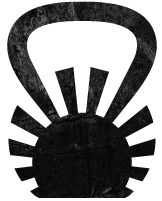Choosing the Right Shoes for CrossFit: Enhance Performance and Prevent Injury
CrossFit workouts are known for their varied movements that challenge athletes across multiple domains of fitness. To excel in this demanding fitness methodology, having the right footwear can make a difference. Let's look at some of the best shoes for CrossFit and why they can be beneficial for your training.
Top CrossFit Shoe Brands and Models:
1. NoBull Trainers: Known for their durability and versatility, NoBull shoes feature a minimalist design with a sturdy outsole that performs well in various CrossFit movements.
2. Nike Metcon Series: A popular choice among CrossFitters, the Metcon line offers excellent stability for weightlifting and enough cushioning for short runs and box jumps.
3. Reebok Nano Series: As the official sponsor of CrossFit for many years, Reebok has refined its Nano shoes to meet the specific demands of the sport, balancing stability and flexibility.
4. TYR CXT-1 Trainers: A newer player in the CrossFit shoe market, TYR's offering provides a stable platform for lifts while maintaining flexibility for dynamic movements.
Why Proper CrossFit Shoes Matter:
1. Improved stability: CrossFit-specific shoes offer a flat, wide sole that provides a stable base for weightlifting movements like squats and deadlifts.
2. Enhanced performance: The right shoes can improve your power transfer during explosive movements like box jumps and Olympic lifts.
3. Versatility: CrossFit workouts often involve a mix of activities, and specialized shoes are designed to handle everything from rope climbs to sprints.
4. Durability: CrossFit shoes are built to withstand the wear and tear of intense workouts, including abrasive movements like rope climbs.
5. Injury prevention: Proper support and cushioning can help reduce the risk of common CrossFit injuries, particularly to the feet, ankles, and knees.
Disadvantages of Improper Footwear:
1. Reduced stability: Running shoes or casual sneakers lack the stable base needed for weightlifting, potentially compromising form and increasing injury risk.
2. Decreased performance: Shoes not designed for CrossFit may limit your ability to generate power in explosive movements or maintain proper form during complex exercises.
3. Lack of protection: Non-specialized shoes may not offer adequate protection for activities like rope climbs, leading to premature wear and tear.
4. Inefficient movement: Improper shoes can lead to energy leaks during lifts and jumps, reducing overall workout efficiency.
5. Increased injury risk: Wearing shoes not designed for the specific demands of CrossFit can lead to overuse injuries, ankle sprains, or other acute injuries during high-intensity workouts.
When choosing CrossFit shoes, consider factors like your foot shape, workout preferences, and any specific weaknesses or injuries you may have. It's often helpful to try on multiple brands and models to find the best fit for your needs.
Remember, while having the right shoes is important, they're just one piece of the puzzle. Proper form, consistent training, and a balanced approach to nutrition and recovery are all crucial elements in your CrossFit journey. Invest in quality footwear, but don't forget to invest in yourself as an athlete too.
Coach JKH CrossFit Rising Sun East Nashville
CrossFitRisingsun.com

